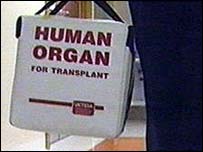Scientists at the Sheffield University revealed that they have evolved a secure method to dispense the toxic gas carbon monoxide (CO) in a way that could help organ transplant patients.
Though too much of the gas is lethal, infinitesimal doses aid in widening blood vessels and cut inflammation, which could increase the chances of survival of donor organs.
Scientists here have formulated a way to release targeted small doses of CO using carrier molecules.
They say laboratory tests have been encouraging and hope to start human trials by 2010.
The team, lead by Professor Brian Mann, claim that their discovery could have other applications too, including treating inflammatory diseases such as rheumatoid arthritis and high blood pressure in the lungs.
Professor Brian Mann is working alongside Dr Roberto Motterlini at Northwick Park Institute for Medical Research.
Conventional CO inhalation harbours the risk of patients or medical staff being accidentally exposed to high doses.
Professor Mann says that the new treatment method should eliminate this risk.
It consists of water-soluble molecules, known as CO-releasing molecules (CO-RMs), which, when swallowed or injected, release calculated doses of CO inside the body.
Professor Mann explained that the molecules dissolve in water so that they can be made available in an easy-to-ingest, liquid form that passes quickly into the bloodstream.
He said that it is much safer way to give CO as they can be injected exactly where required without being a threat. For transplant patients, he added, one could treat the donor organ to minimise the risk of damage and rejection.
Dr Ian Fairlamb, a chemist at the University of York, said many scientists were now considering developing CO-RMs on the basis of Dr Motterlini’s phenomenal work.
At first it may seem surprising that CO can be beneficial because it is a known toxin. But low doses of CO can elicit a wide range of biological effects, which can be exploited in many therapeutic applications.




